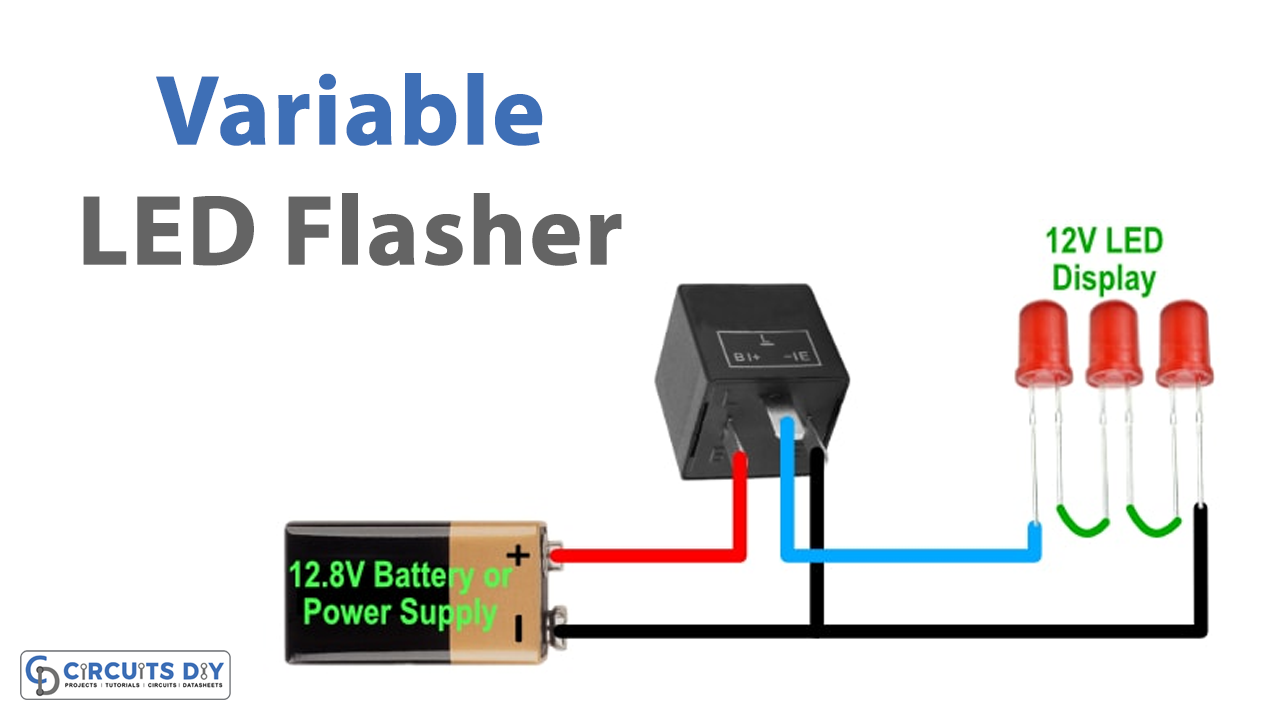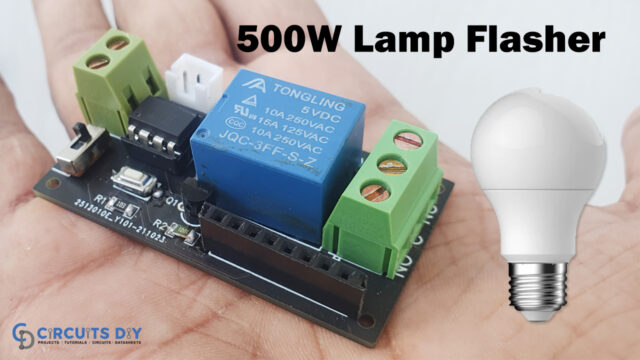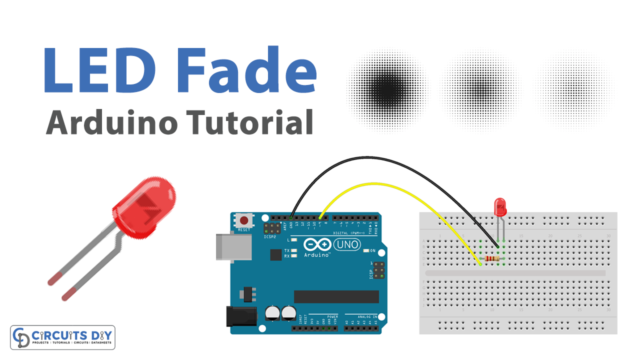LEDs are probably the only components to offer a wide range of applications. It can be used either to describe the working of the circuit or with LED itself, a complete circuit can be developed. The LED flasher circuit makes use of this amazing component to turn its flash on and off. An LED flasher is a turn-signal or hazard flasher relay that works properly with LED turn-signal bulbs. When you need a flasher for a car or motorcycle capable of working in situations for LED turn signals. Here we design a simple variable LED flasher circuit by using LM 3909 IC. This flasher features an adjustment control to vary the flashing frequency.
Hardware Required
| S.no | Component | Value | Qty |
|---|---|---|---|
| 1. | IC | LM3909 | 1 |
| 2. | LED | – | 1 |
| 3. | Capacitor | 350uF/10V | 1 |
| 4. | Resistor | 100Ω,2.2KΩ | 2,1 |
| 5. | Variable Resistor | 2.5K Ω | 1 |
| 6. | Connecting Wires | – | – |
| 7. | Battery | 1.5V | 1 |
Circuit Diagram

Working Explanation
Here as we can see, the main part of the circuit is LM 3909 IC. This is a monolithic oscillator specifically designed to flash Light emitting diodes. By using the timing capacitor for voltage boost, it delivers pulses of 2 or more volts to the LED while operating on a supply of 1.5V or less. The circuit is inherently self-starting and requires the addition of only a battery and capacitor to function as an LED flasher. It can operate for over one year from one C-size flashlight cell, giving a bright and high current LED pulse. This IC requires minimum external components for its operation. It can operate from a low voltage of 1V to 5V and has a low current drain, averaging under 0.5 mA during battery life making this IC operation long-lasting. It can directly drive an 8Ω speaker. And also this IC can operate in wide temperature ranges. Now as shown in the circuit, we can vary the speed of the flasher by varying variable resistor R2.
Applications
- Locating boat mooring as well as finding flashlights in the dark
- Emergency locators
- Electronic circuits such as saw tooth generators or trigger circuits.
- Toys and decorations
- Warning indicators












